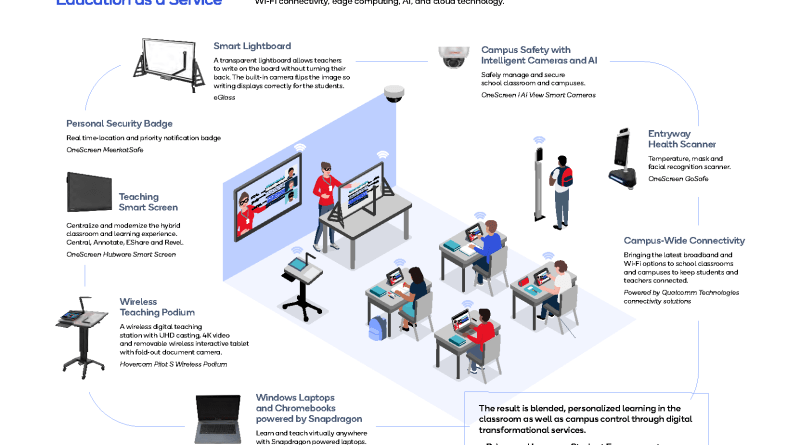
3 Ways Technology is Transforming Education
When a hit pandemic, students around the world are pulled out of school and technology become a necessity to ensure that educators and students can connect and navigate new normal. Access to critical infrastructure such as devices and reliable connectivity underlines digital division and becomes clear that technology is very important to increase equity through education and keep students involved and succeed in remote and hybrid environments. Most educators agree that technology can improve student results because it can adapt quickly and respond to various styles and learning needs.
New subscription purchases such as Qualcomm-AS-A-Service (EAAS) offerings have emerged, allowing school to change digitally how students learn and teach. Qualcomm EAAS can provide important technology that serves the entire campus – from the parking lot to the administration office to individual classrooms – for a safe, inclusive and modern learning environment.
The following are three ways of technology that changes the classroom and why subscription purchases for education provide the entrance to future classrooms:
- Driving digital equity with equitable Ed-tech distribution and equal access to new essential learning tools
All students have the right to get fair educational opportunities. However, the continued arrival of the “latest and greatest options” and obstacles including funding congestion and the need for technical training and more, can make it difficult for classrooms to get the appropriate refresher they need, which is why a new approach like Qualcomm EAAS is game modifier.
Students, parents, and educators all desire access to new, essential, and impactful learning tools. Qualcomm EAAS subscription model provides access to the latest edtech school without expensive investment, upfront, and schools do not have to choose and choose which class and which students will benefit from the technology they need most. Subscription approach creates distribution equity with districts and campuses for learning tools that help advance student performance. Also, administrators can ensure students have technology in class which is insofar as the technology they know elsewhere. This makes modern technology accessible for all classrooms and allows educators to focus on student-centered learning, using technology as a resource to help unique learning, interest, and needs forces.
This new approach to technology integration in the class simplifies the latest Edtech shipments to schools and campuses to build a more efficient hybrid learning environment in a cost-effective model and can be achieved.
- Inspiring innovation and fostering collaboration
Digital transformation discusses how schools provide resources for all students in various environment -Virtual, on site, and hybrid environments. Adopting iot technology – from devices connected to connectivity infrastructure – has emerged as a new status quo, and becomes clear that access to resources is very important in supporting students, educators and campuses.
Qualcomm EAAS includes a series of connectivity technology that empowers students and teachers to connect to a smooth learning experience whether they are in class, at home, or far away. Qualcomm Eaas offer comes with an advanced Edtech option menu including interactive smart screens, digital teaching podiums, connected laptops, video collaboration tools, smart cameras – all with technical support and teachers who provide and learn to teach and learn. With available tools, student involvement and performance can be increased through the novel and profound class experience that displays the integrated learning management system (LMS) and other educational content that uses AI / Machinery learning.
- Creating safer classrooms and campuses
Security is a top priority for parents, educators, and students, and technology has proven transformative in supporting the safety and welfare of classrooms and campuses. From campus security, a real-time smart security dashboard, and perimeter perimeter for notifications combined with cameras, access control, and body temperature and facial recognition scanners, IOT technology is integrated into teaching with greater peace of mind.



Average Rating